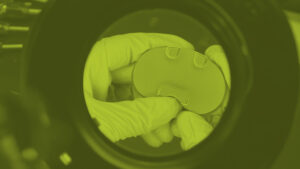Key Takeaways
- Reverse reprocessing helps extend the lifecycle of medical devices, leading to less waste and reduced costs for Original Equipment Manufacturers (OEMs).
- Adherence to FDA and EU Medical Device Regulation (MDR) guidelines is essential to ensure the safety and effectiveness of reprocessed devices.
- An optimized reverse reprocessing strategy enhances supply chain efficiency while preserving product integrity.
Revolutionizing Medical Device Reprocessing for a More Sustainable Industry
The medical device industry faces increasing pressure to balance cost efficiency, ensure environmental responsibility, and comply with regulations. As the demand for high-performance, single-use medical devices rises, so do concerns about waste, supply chain challenges, and escalating costs.
Medical device reverse reprocessing has emerged as a viable solution for OEMs to extend product lifecycles, reduce material waste, and lower costs, all while ensuring compliance with stringent regulatory standards. OEMs can mitigate supply chain risks and enhance operational efficiency by reprocessing medical devices that meet rigorous safety and performance criteria.
This article explores the concept of reverse reprocessing, its regulatory challenges, potential for cost savings, and real-world success stories that illustrate its impact on the medical device industry.

What is Medical Device Reverse Reprocessing?
Medical device reverse reprocessing involves inspecting, cleaning, testing, and refurbishing single-use or limited-use medical devices to enable their reuse. These devices must adhere to strict regulatory requirements to ensure they remain safe and effective for future use.
The Reprocessing Workflow
- Device Collection – Used medical devices are collected from healthcare facilities and sorted according to their feasibility for reprocessing.
- Cleaning and Disinfection – Devices undergo thorough cleaning and disinfection to eliminate biological contaminants.
- Functional Testing and Inspection – Inspectors examine devices for wear and tear, assess their mechanical integrity, and ensure they comply with performance standards.
- Reassembly and Sterilization – Components are refurbished or replaced before the device undergoes final sterilization.
- Regulatory Validation and Packaging – The reprocessed device is validated, packaged, and labeled for safe reuse in clinical settings.
Navigating Regulatory Challenges in Reverse Reprocessing
To ensure patient safety, reprocessed medical devices must function at the same level as new devices and comply with FDA, EU MDR, and ISO 13485 standards.
FDA and EU MDR Compliance
The FDA (U.S.) and the European Medical Device Regulation (EU MDR) enforce strict guidelines for reprocessing medical devices to ensure they meet the same performance and safety standards as new devices.
- FDA Requirements: In the U.S., reprocessed devices are classified under the 510(k) Premarket Notification process. This requires OEMs to demonstrate that their reprocessed devices are equivalent to new products.
- EU MDR Requirements: In Europe, reprocessed devices are governed by Annex VI of the EU Medical Device Regulation (EU MDR MDR 2017/745). This regulation mandates traceability, quality validation, and risk assessments for reprocessed products.
- ISO Standards: ISO 13485 and ISO 14971 outline quality management and risk mitigation strategies for OEMs involved in medical device reprocessing.
Challenges of Compliance
Strict FDA and EU MDR regulations require rigorous validation, biocompatibility testing, and traceability for reprocessed devices. Non-compliance can lead to recalls and penalties, making robust quality controls and expert partnerships essential for success.
- Stringent Testing and Documentation: OEMs must demonstrate reprocessed devices’ biocompatibility, sterility, and mechanical durability.
- Liability and Risk Management: Reprocessing involves liability, requiring OEMs to implement robust quality controls and traceability mechanisms to mitigate risks.
- Evolving Regulations: As regulatory bodies enforce stricter reprocessing requirements, OEMs must stay informed of compliance updates to prevent delays in product approvals.
OEMs that partner with a reprocessing provider with integrated testing and validation services gain the advantage of streamlined validation, regulatory compliance, and quality assurance—all from a single source. This approach reduces handoffs, accelerates turnaround times, and ensures seamless alignment with FDA and EU MDR requirements.
How Reverse Reprocessing Lowers Costs While Maintaining Device Integrity
The financial benefits of reverse reprocessing extend beyond mere cost savings, enhancing supply chain stability and product availability.
Key Cost-Saving Advantages for OEMs
- Reduced Manufacturing Costs: Reprocessing minimizes the need for raw materials and lowers expenses associated with producing new devices.
- Waste Reduction and Sustainability: Diverting used medical devices from landfills supports corporate sustainability goals and decreases disposal costs.
- Supply Chain Efficiency: Reprocessed devices improve inventory availability, reducing the risk of shortages and shipment delays.
- Enhanced Operational Efficiencies: Streamlined logistics and validation processes shorten lead times, resulting in faster product turnaround.
With effective quality control and validation, OEMs can achieve substantial savings without sacrificing device integrity or patient safety.

Why Millstone is the Right Partner for Reverse Reprocessing
At Millstone Medical Outsourcing, we offer comprehensive post-manufacturing services designed to help OEMs streamline reverse reprocessing, packaging, and distribution.
- Regulatory Expertise – We assist OEMs in meeting FDA, EU MDR, and ISO 13485 compliance standards for reprocessed devices.
- Custom Reprocessing Workflows – Our solutions include cleanroom processing, functional testing, and sterility validation.
- Seamless Supply Chain Integration – We provide end-to-end logistics support to ensure fast and efficient product turnaround.
- Traceability & Quality Assurance – Our data-driven approach guarantees full product traceability and performance validation.
With decades of expertise in medical device outsourcing, Millstone helps OEMs maximize cost savings, improve compliance, and enhance sustainability through effective reprocessing strategies.
The Bottom Line
Reverse reprocessing transforms the medical device industry by providing OEMs with a cost-effective and sustainable alternative to traditional manufacturing methods.
By implementing strategic reprocessing workflows, OEMs can:
- Lower costs and minimize material waste
- Ensure compliance with global regulations
- Enhance supply chain efficiency







